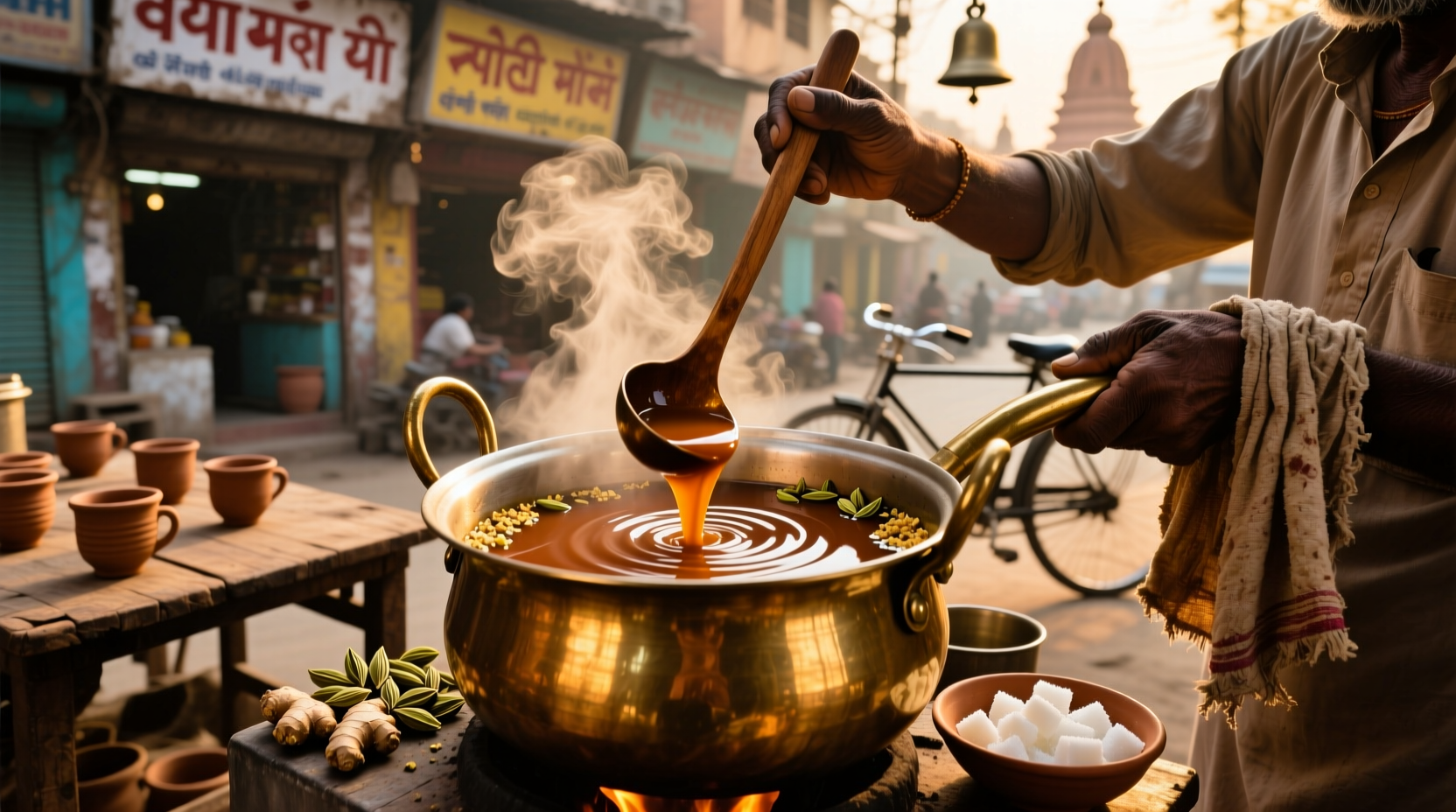If you've ever wondered what gives chai tea its distinctive flavor, you're not alone. This beloved beverage has captivated taste buds worldwide with its unique sensory experience. Understanding chai's flavor profile helps you appreciate why it stands apart from other tea varieties and how to identify authentic preparations.
The Core Flavor Components of Authentic Chai
Authentic masala chai creates a multi-layered taste experience through carefully balanced ingredients. When properly prepared, you'll notice these distinct flavor elements in sequence:
- First impression: Aromatic spice notes hit your senses immediately - primarily cardamom's citrusy warmth followed by cinnamon's sweet woodiness
- Middle notes: Ginger's gentle heat emerges, complemented by clove's subtle bitterness and black pepper's mild pungency
- Base foundation: A robust black tea (typically Assam) provides earthy, malty undertones that anchor the spice blend
- Mouthfeel: Steamed milk creates a creamy texture that softens the spice intensity
- Finish: Natural sweetness (traditionally from unrefined cane sugar) balances the spices for a satisfying conclusion
This progression creates what tea connoisseurs call the "chai cascade" - where flavors unfold in a deliberate sequence rather than hitting all at once.
How Preparation Methods Transform Chai's Taste
The exact flavor profile varies significantly based on preparation technique. Traditional Indian street chai (known as chai wallah style) differs markedly from Western interpretations:
| Preparation Method | Flavor Characteristics | Texture Profile |
|---|---|---|
| Traditional Indian Street Chai | Stronger spice presence, pronounced ginger heat, less sweet | Thicker, more robust body from extended boiling |
| Western-Style Chai Latte | Milder spices, dominant sweetness, vanilla notes | Smoother, creamier from frothed milk |
| Modern Specialty Chai | Balanced spice blend, nuanced tea flavor | Velvety texture with defined spice separation |
According to research from the Tea Research Association in Jorhat, India, the boiling duration significantly impacts flavor extraction. Their studies show that simmering spices for 8-10 minutes releases optimal essential oils, while shorter durations produce weaker flavor profiles (Tea Research Association, 2023).
Chai's Historical Flavor Evolution
Chai's taste profile has evolved dramatically over centuries, reflecting changing cultural practices and available ingredients:
- Pre-1800s: Ayurvedic herbal preparations without tea leaves - primarily medicinal spice decoctions
- 1830s-1900s: British introduction of black tea plantations transforms chai into tea-based beverage
- Early 1900s: Indian Railway Catering introduces standardized street chai preparation methods
- 1990s-Present: Global popularization leads to Westernized versions with altered spice ratios
This historical progression explains why modern chai differs from its ancient Ayurvedic predecessors. The addition of black tea fundamentally changed chai's flavor foundation, while commercialization has simplified traditional spice complexity.

Key Variables That Shape Your Chai Experience
Several factors determine whether your chai delivers authentic flavor characteristics:
Spice Freshness and Ratios
Freshly ground spices create dramatically different flavor profiles compared to pre-mixed powders. Traditional Indian chai uses specific ratios:
- Cardamom (3 parts) - provides floral citrus notes
- Ginger (2 parts) - delivers gentle heat
- Cinnamon (1.5 parts) - adds sweet warmth
- Cloves (1 part) - contributes subtle bitterness
- Black pepper (0.5 parts) - enhances spice absorption
As documented in Spice Science: Traditional Indian Culinary Practices (University of Delhi, 2022), these precise ratios create flavor synergy where the whole exceeds the sum of individual components.
Milk Selection Impact
The type of milk significantly alters chai's final taste profile:
- Whole dairy milk - creates richest mouthfeel and balances spice heat
- Goat milk - adds subtle tanginess that complements spices
- Plant-based alternatives - alter flavor balance (coconut enhances sweetness, almond adds nuttiness)
Recognizing Authentic Chai Flavor
When evaluating chai quality, watch for these flavor indicators:
- Spice complexity: Individual spices should be discernible but harmonious
- Tea presence: Black tea base should be noticeable, not overwhelmed by spices
- Sweetness balance: Sugar should complement, not dominate, the spice profile
- Aftertaste: High-quality chai leaves a pleasant, lingering spice warmth
Commercial chai concentrates often miss these nuances, creating one-dimensional flavor experiences. Authentic preparation requires careful attention to ingredient quality and brewing technique.
Regional Flavor Variations Across India
India's regional chai variations demonstrate remarkable flavor diversity:
- Mumbai Street Chai: Strong ginger presence with higher black pepper content
- Kolkata Chai: Cardamom-dominant with added fennel seeds
- South Indian Filter Coffee Influence: Darker roast notes from local coffee culture
- Punjabi Masala Chai: Richer milk content with saffron accents
This regional diversity explains why visitors to India often describe experiencing "chai for the first time" despite previous exposure to Western interpretations.
Creating Your Perfect Chai Flavor Profile
When preparing chai at home, consider these practical adjustments:
- For milder spice notes: Reduce black pepper and cloves by 25%
- For stronger tea presence: Increase tea leaves while maintaining spice ratios
- For less sweetness: Substitute honey or maple syrup for sugar
- For creamier texture: Use a 50/50 blend of whole milk and half-and-half
Remember that authentic chai requires patience - the spices need adequate simmering time to release their full flavor potential. Rushing the process creates a flat, one-dimensional beverage.











 浙公网安备
33010002000092号
浙公网安备
33010002000092号 浙B2-20120091-4
浙B2-20120091-4